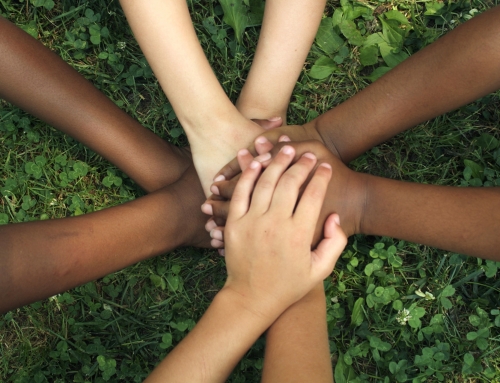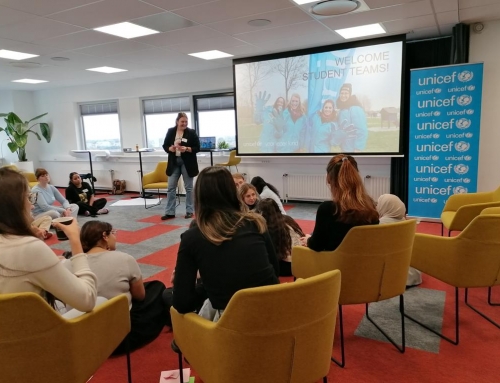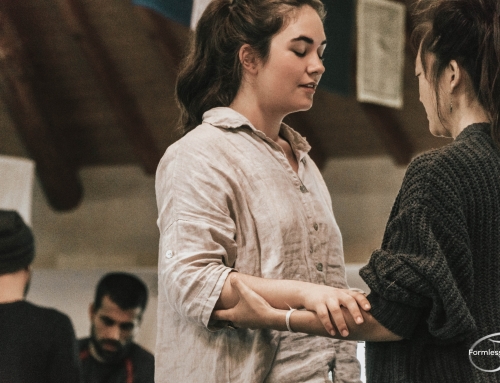
We, as humans, are capable to transform, to change and to be flexible. Additionally, I believe that when we find ourselves in a crisis, this is even shown more clearly. In my previous blog, I advocate that I, as a Transformative Social Innovator, want to stimulate innovation that positively adds to societal challenges, where co-creation is crucial, and creating a sustainable change is possible. From this point of view, I connected with my clients Michael Echteld and Rutger van Eijken, both member of the professorship caring society – end-of-life care. In the following blog, I will elaborate on the challenge we face, first ideas of how to approach this and how this connects to my values as a professional.
The pandemic
Our society is faced with numerous challenges that may severely affect the quality of our life. The most recent one you might consider, COVID-19. Many claim the initial focus of the government during this crisis is to tackle the crisis but to continue our daily lives as much as possible. Subsequently, we mostly focus on economic impact. Nevertheless, the psycho-sociological impact grows as this crisis continues. So, Echteld starts to ask the questions what if you do not see a future for yourself anymore? What if you do not know how to grief for what you lost? And what if we start to explore a new perspective, change the intended narrative, show more resilience and strive for a Compassionate Community? Would we be able to make a change in the perspective of how people perceive this crisis?
These questions cannot simply be answered. However, what it does show is that we need more social cohesion and become resilient advocates research group end-of-life care (EoLC, 2020). This is highlighted in a manifesto in which they strive towards an organic and spontaneous co-creation between education, research, work field, government and society focussed on compassionate communities (EoLC, 2020). Even though this was already written before this pandemic, it was a spontaneous moment in which this story got a collaborative meaning. Suddenly, there is a collective who is fighting the same battle focus on grieving everything we lost during this pandemic. In that sense, the word grief means more than losing someone, it is also about losing your freedom, the structure of your daily life, work or school, the social connection and your sense of belonging.
Compassionate Community
Focussing on a compassionate community is a movement based on the World Health Organisation’s Ottawa Charter (WHO, 1986). Compassionate Communities (CC) promote that publicly recognize people at the end of life and their needs and are aware of the search and involvement of all the main sectors of the city to help through care and accompaniment to reduce the social, psychological and health impact of life’s difficult processes and situations, especially those related to disability, ageing, dependence, end of life, the burden of caregivers, pain and loss of a loved one” (Kellehear, 2015).
It bothered me that we often think that often we only believe that a crisis has negative (side)effects. Therefore, I focussed on elements and the mindset of positive (side)effects during my previous research. The implementation of Compassionate Communities sparked something in me since I believe the opportunities in this are countless. Together with Michael and Rutger, we started to explore what eventually could be the challenge that we are going to work on. This started from Compassionate Communities to elaboration on its co-themes: namely compassion, resilience, and collectivism.
I started to explore these themes and learned that firstly compassion embodies a tangible expression of love for those who are suffering, recognize the suffering of others, and then take action to help (Compassion International, 2019). Secondly, that resilience is the ability to bounce back from negative emotional experiences and by flexible adaption to the changing demands of stressful experiences (Reivich, 2020). Finally, that collectivism emphasises the needs, wants, and goals of a group over the needs and desires of each individual (Tan, 2019).
The overarching challenge
The theme of Compassionate Communities already sparked my interest. The implementation of the co-themes made it even more interesting. Concerning the COVID-19 crisis, it empowers that society does not only faces the grief of losing someone. To contain this virus, society faces many restrictions and its effects start to feel more negative every day it continues. Together with my clients and the other members of the research group end-of-life care, they decided that this was the moment to start working on the implementation of Compassionate Communities. We knew that this is not something that can be achieved in a short period. However, they wanted to test its effects when people need it even though they do not know that themselves yet. Therefore, they started a COVID-19 challenge with two pilots in Breda and S-Hertogenbosch to work on these topics and strive for a more Compassionate Community. From this pilot, we created a focus group of people who liked to work on this topic more intensely.
When speculating about transforming towards a Compassionate Community and more resilience, multiple approaches are envisioned. On one hand, it is possible to focus on the personal aspect defined as the focus on the locality (bottom-up). What happens to a person when something influences society but also has an impact on their well-being? And, how can a Compassionate Community help to make this experience more positive? Moreover, can we create collectivism in the form of a Compassionate Community that shows resilience? On the other hand, we have experts and professionals in the dominant system (top-down). They also see the need to take action, however, until now, they did not speak the same language as a society. Moreover, often they desire to do the same thing but they cannot find a connection with each other.
My challenge
For me, the challenge lies in merging the dominant system and the localities to let them work aligned and in a co-creative and co-designing way. Until now, the involved people who are affected by the matter in both approaches seem to not be able to speak in the same language. Moreover, they do not share a narrative on how to reach the desired change and implement it sustainably. In this, I would like to position myself between these movements and be the connector. By creating a focus group in the pilot, I would like to co-create and co-design the narrative of this story. This narrative should become the connecting factor between the movements and create a common purpose. This could be a milestone in the pilot for a Compassionate Community. Besides, from that point onwards, we can collectively work towards finding more free actors to stimulate this movement, find changemakers, and work our way towards a sustainable change concerning Compassionate Communities.
This challenge is conducted into a how might we question to sum the whole which is as follows. How might we… merge the dominant system and the localities to create an intended narrative concerning compassion, resilience and collectivism and strive for a compassionate community?
Conclusion
Everything in this blog adds to whom I want to be as a Transformative Social Innovator. I want to work co-creatively with people who believe in something and strive for it. To be part of a positive innovation that helps society to become more resilient, to show compassion, and stand as a collective. This challenge creates opportunities to research how we can positively develop ourselves in uncertain times and how a narrative can change a perspective. What I do believe, and this is also one of the standards I live by, you need a little bit of faith and be an opportunist to rule the world!
So, what can you expect in the future? I want to focus on these co-themes to have a positive approach to this challenge. I want to explore how this can be implemented more often and what it takes to change someone’s beliefs. Eventually, I hope that we agree on at least one thing, a crisis can bring opportunities as long as you are willing to open your eyes for it.
Bibliography
Tugade, M. M., & Fredrickson, B. L. (2004). Resilient Individuals Use Positive Emotions to Bounce Back From Negative Emotional Experiences. Journal of Personality and Social Psychology, 86(2), 320–333. https://doi.org/10.1037/0022-3514.86.2.320
Kellehear, K. (2015). Compassionate Communities (1st ed.). Abingdon, United Kingdom: Taylor & Francis.





